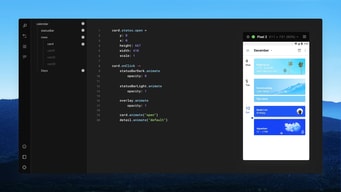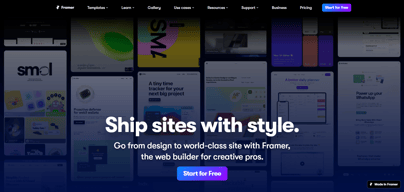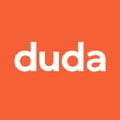

Unclaimed: Are are working at Framer ?
Framer Reviews & Product Details
Framer is a design tool for web designers and developers that lets users create production-ready code. Armed with basic coding knowledge, Framers has tools that can create animated effects, build UI components and tap into code libraries, UI kits, or packages. Framers also support typescripts. With Framer, you get a lot of creative freedom, features a cursor chat, a rapid code editor, Spotify integration, as well as Sketch, Figma, iOS, Photoshop, and more.


( 1 )
| Segment |
|
|---|---|
| Deployment | Cloud / SaaS / Web-Based, Desktop Mac |
| Support | 24/7 (Live rep), Chat, Email/Help Desk, FAQs/Forum, Knowledge Base, Phone Support |
| Training | Documentation |
| Languages | English |
Framer Pros and Cons
- You get a lot of creative freedom
- Framer is available on multiple platforms, and any device running a web browser
- There are a range of different integrations available, including Sketch, Figma, iOS, macOS, Photoshop, and more
- It’s great for prototyping
- Some users have complained about buggy updates
- To take full advantage of Framer, you’ll need some coding know-how
- It lacks some sought after features like text style, which comes with competitors like Sketch





Compare Framer with other popular tools in the same category.

- Allows interactions to be functionally defined through a robust scripting language - Easy to quickly visualize results
- Learning curve for beginners, albeit well worth the investment of time
One of the best tools for presenting the nuances of interactions. More than design comps, Framer provides developers with high-fidelity, functioning interactions.
It's a great tool to convert your amazing web designs straight into actual working websites without the hassle of coding. It saves a lot of time and effort plus the interface is super user friendly. While working in Figma with UI designs, this tool is really helpful to create stunning landing pages.
There's nothing as such to dislike about it. The only issue I faced is their website. It kind of slow and could be better and smooth for their end visitors.
1. Saving a lot of time that I would probably spend on coding. 2. Its integration with figma is a plus because I can directly use it with figma. I don't need to use a separate application. 3. It gives creative freedom while working on designs.
Framer stands out as a robust prototyping and design tool, offering several advantages that cater to the needs of designers and developers. One notable advantage is Framer's emphasis on interactive and realistic prototyping. The platform allows users to create highly interactive and dynamic prototypes, providing a more accurate representation of the final product's user experience. Framer's integration with popular design tools like Sketch and Figma facilitates a seamless workflow, enabling users to import their designs effortlessly. The platform's coding capabilities, based on the widely-used React framework, empower designers to implement complex interactions and animations, bridging the gap between design and development. Framer's real-time collaboration features enhance teamwork, enabling designers and developers to work together on the same project simultaneously. Additionally, Framer's extensive component library and reusable design elements contribute to increased design consistency and efficiency. Overall, Framer excels in empowering designers and developers to create interactive, high-fidelity prototypes that closely resemble the final user interface, fostering collaboration and efficiency throughout the design and development process.
While Framer is a powerful tool for interactive prototyping and design, it does come with some potential disadvantages. One notable drawback is the steeper learning curve compared to other design tools. Framer's emphasis on coding and its integration with React may be challenging for designers who are not familiar with programming concepts. This learning curve can potentially slow down the onboarding process and hinder quick adoption by design teams. Additionally, the robust features of Framer come with a higher price point compared to some other design tools, which could be a limiting factor for smaller design teams or individual users with budget constraints. Furthermore, the reliance on coding for certain interactions may lead to a more technical and less visual design process, potentially limiting the creative freedom of designers who prefer a more visual approach. Despite these disadvantages, Framer remains a powerful tool for those who prioritize advanced prototyping and are willing to invest the time in mastering its capabilities.
I needed to design a new website, and wanted to try an alternative instead of Figma. Framer was really useful for my purpose
The Figma plugin allows me to convert my designs to code seamlessly. This is incredible as a starting point when creating a Framer website
Some parts can be buggy and will need a little bit of manual intervention when using the Figma Plugin.
Being able to prototype without the requirement of engineers allows me to demonstrate and validate the value of designs. This is incredibly useful in an agile workspace where you are required to build and test almost every sprint.
Easy design-to-code transition. No-code simplicity for animations. One-click publishing.
Learning curve for some. Complexity in extremely intricate projects
Framer solves the challenge of bridging design and code seamlessly. This benefits me by streamlining the web design process, making it accessible with no code needed. The one-click publishing and Framer Motion for React enhance efficiency and creativity, translating to quicker project delivery and a smoother design workflow.
Framer is simple to use, easy to learn and packed with advanced features to build what you have on your mind. After creation, you publish and are done. Lighthouse speeds are also good and the community remixes are gasoline on the roaring fire that Framer currently is.
The cms without api. It lacks versatility and currently.mostly vendor locks you. Embrace the Jamstack please :)
Framer makes it easy to build an mvp/landingspage and is more then good enough to build upon after validating your concept.
Comparing it with its competitors I feel like framer is very easy to use and go live with website very quickly. I've used their competitors too like webflow, but I felt like framer is good, and the themes that are there on framer have better options
Initially I felt sad that it doesn't have html export option but later I felt okay that I can use their hosting option which is not costlier comparing it with the hosting providers like godaddy and namecheap
Drag and drop, ease of making website and pre-built themes all in one are solving my problem and giving me edge with the time to go live
Framer has made it possible to convert our designs into an actual website even more easily without any coding. This allows me to work faster and help more customers. It is also very easy to explain Framer to customers, allowing them to make adjustments themselves
Because it is still fairly young, it is not yet as far along as Webflow in some respects. As a result, we sometimes have to take a diversion or try something different. But most of the time we figure it out and succeed in another way
Because of Framer, we don't have to interact with customers as much and we can create the design all at once without having to design it first and then recreate it in Framer.
The interface is very familiar as a designer using adobe suite & Figma, Framer makes it really easy to begin creating websites.
As a designer sometimes it gets confusing to figure out the CMS part.
Its solving many issues, some i never even knew about at a great pace.
You can design complex animations, transitions, and interactions, you can also test these prototypes on real devices and feel how they behave on different platforms.
It's not a free tool, and also cannot collaborate with other commonly used designing tools like (figma, sketch, etc). Sometimes it can be time-consuming to create animations.
It is a powerful tool to create prototypes with animations and interaction, it can be very helpful for a designer.





